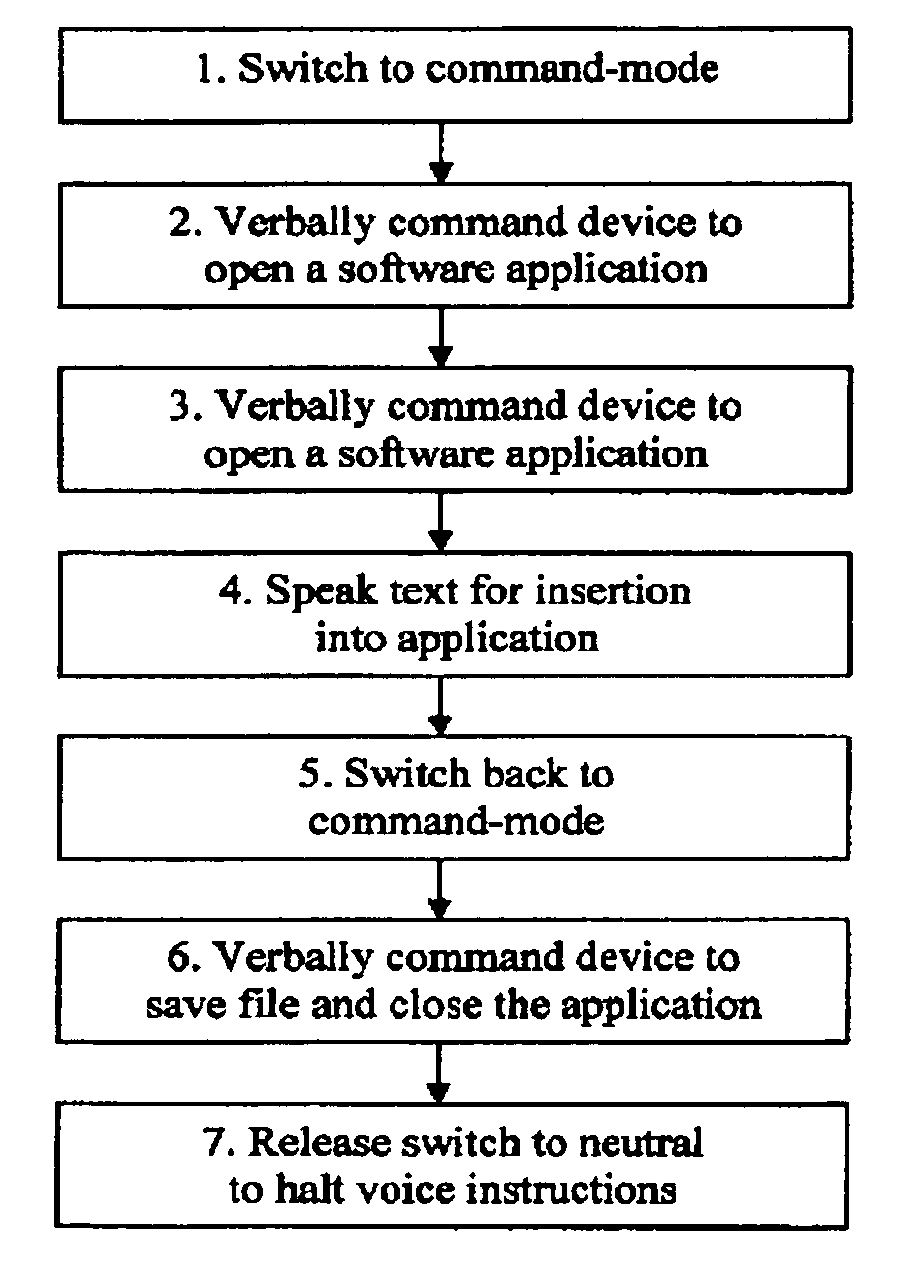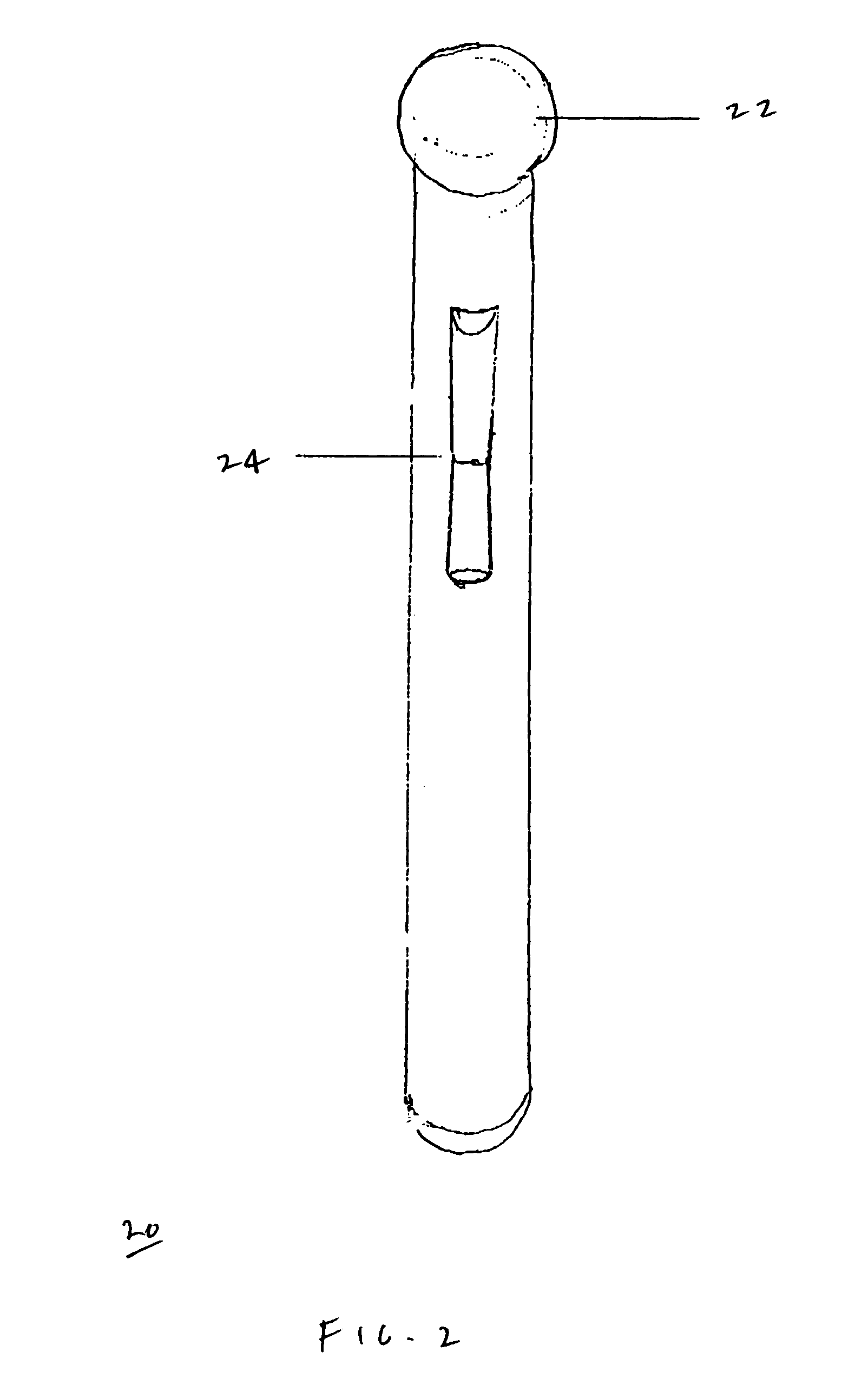Switching the modes of operation for voice-recognition applications
a voice recognition and voice technology, applied in the field can solve the problems of difficult learning and use of voice recognition systems, difficulty in knowing whether to interpret users' words, and difficulty in knowing voice recognition systems
- Summary
- Abstract
- Description
- Claims
- Application Information
AI Technical Summary
Problems solved by technology
Method used
Image
Examples
Embodiment Construction
[0012]The present invention is a system and method for switching between the command-mode of operation and the text-mode of operation in voice-recognition systems. The system of the present invention is comprised of voice-recognition software and an apparatus for selectively switching between the command-mode and the text-mode. FIG. 1 shows a first exemplary embodiment of an apparatus 10 for switching between the command-mode and the text-mode in voice-recognition systems according to the present invention. Apparatus 10 is implemented as a computer mouse which can be fabricated in any shape, have any number of mouse buttons, and have a page up / down scroll wheel between two of the buttons. Apparatus 10 is used with a microphone which is not shown and into which a user speaks. This microphone may or may not have a command-mode / text-mode switch to operate a computer, and can be any type of microphone such as a handheld, desk-mounted or headset microphone, or a remote combination microp...
PUM
 Login to View More
Login to View More Abstract
Description
Claims
Application Information
 Login to View More
Login to View More - R&D
- Intellectual Property
- Life Sciences
- Materials
- Tech Scout
- Unparalleled Data Quality
- Higher Quality Content
- 60% Fewer Hallucinations
Browse by: Latest US Patents, China's latest patents, Technical Efficacy Thesaurus, Application Domain, Technology Topic, Popular Technical Reports.
© 2025 PatSnap. All rights reserved.Legal|Privacy policy|Modern Slavery Act Transparency Statement|Sitemap|About US| Contact US: help@patsnap.com



